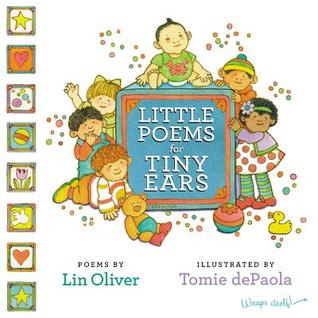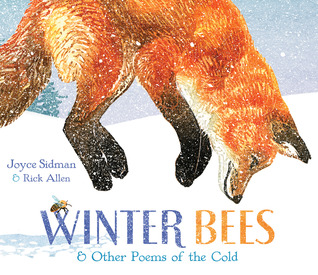As part of a continuous collaboration among educators interested in digital learning, Margaret Simon hosts a weekly Digital Learning round-up on her blog: DigiLit Sunday. Stop by Reflections on the Teche (today's link-up) to read, discover, and link.
You may be following the conversation that is happening around the blog world this week--on whether technology has a place in our elementary classrooms.
Troy Hicks and
Kristin Ziemke responded to a post by
Nancie Atwell and then the conversation continued with brilliant posts from
Cathy Mere and others.
Let me start by saying this . Nancie Atwell is my hero. She taught me about workshop and gave me my grounding as a reading and writing teacher. And I can't wait to read her newest edition of
In The Middle. Disagreeing with Nancie is a hard thing for me to do. I do disagree with her on this one, though. However, I was where Nancie is. I did not come to using technology in the classroom quickly or happily. I did not see its power until very recently.
My Own Journey
As a writer, I remember the day that I said that I could never imagine myself composing on a computer-that I liked my yellow legal pad, that I could see myself using the computer for a final draft, but I could not imagine those first steps of the writing process without paper.
But that was when the ways we could tell stories were limited. That was when I told stories of my classroom with words and a few photos. That's when I carried overhead transparencies of those photos to tell my story at conferences and workshops.
I think back to that day and realize that I could not imagine using the computer for composing because I had no idea what was possible. I had no idea that one day I'd be able to tell my story with words and images and videos and hyperlinks. I had no idea that I'd be able to carry my photos and notes and links with me on a phone that is small enough to fit in my purse. I had no idea that I would no longer need a publisher to have an audience for my stories or that I could connect with others who were telling stories of their classrooms. I had no idea that these stories would connect me to people around the world.
I feel like an elder telling of the time I had to walk through the snow to school, but I am old enough to have gone through this process and to work through what these changes mean for the classroom. Nancie Atwell taught me about authenticity and ownership and it is something that has stayed with me and that has kept me grounded. It is also one that has been challenging to uphold these last few years as technology seems to have changed everything. It is the message of authenticity and ownership that has forced me to open up my mind to how technology is changing literacy.
I did not start using technology in the classroom quickly or without a fight either. I kind of came in kicking and screaming. I used technology a bit, but the ways I saw technology being used in the classroom went against everything I knew about authenticity and ownership. It went against all I knew about literacy learning. I saw kids watching videos and kids playing games and kids typing projects that they could have handwritten in half the time. I did not see the reason to take one minute from what I was doing in order to add technology to my already successful workshop.
Then I was put on an NCTE committee to study digital literacy. I was on a committee with brilliant people who understood the power of digital tools and the impact these tools were having on literacy far better than I ever could. Listening and learning with this group of people helped me to see that this conversation was not about technology but it was about literacy. I'm not sure what was said, but I remember a moment in the meeting where I thought, "OH, that's what is possible?" From then on I realized technology was a game changer and that because of it, the very definition of what it means to be literate was changing. I realized that these tools could empower our students as readers and writers in ways that were not possible before.
Since my kicking and screaming days, I've forced myself to dig in and to see what I was missing. I have learned from so many people and dug into what is possible.
Troy Hicks' work on Digital Writing Workshop and
Kristen Ziemke's work with first graders have been critical to my current stance. I found people who understood both literacy and technology and listened to their thinking. I learned from
Bud Hunt,
Kevin Hodgson,
Sara Kajder,
Bill Bass,
Chris Lehman,
Will Richardson,
Angela Maiers,
Kathy Cassidy,
Katharine Hale and so so so many others. And I have only been able to learn from these people because of the ways writing has changed--I am able to follow their blogs, have conversations on Twitter and respond and reflect on my own blog.
I've always believed in a workshop of the possible, in a workshop where children in our classrooms can discover what it means to be a reader and a writer. I want my students to discover all that is possible so they can be intentional and thoughtful. And I want their reading and writing lives in school to be authentic and the classroom experiences to help kids see what it means to be a reader and a writer today.
In the Classroom
My kids don't see technology in the same way that I do---instead they see it as one tool for communication. Even at age 8, they are fluent in their use of these tools and intentional about the ways they use them to meet their needs. I have students who blog regularly and the growth they've had as writers because they have an audience every day is stunning. I have writers who use their iPods to set reminders so that they do not forget their weekly blog series post. I have readers who annotate on iBooks and then use those annotations to write book reviews to share with classmates. Of course, this doesn't happen with the teaching focused on writing--craft, organization, genre, etc. The key is that the teaching focuses on the writing, not the tool.
This is a photo I took last year because I was so amazed by what I saw. Students spread out on the floor using digital and traditional tools together to work through something. I see this over and over and over each day. The tools are not the focus, but they open up possibilities for learning in so many ways.
Just this week, I saw how much the technology is embedded in all that our students do as readers and writers. 12 students met before school to discuss the graphic novel,
Sisters by
Raina Telgemeier while enjoying donuts. In the discussion, one of them realized that this was a personal narrative (a writing unit of study we are in the midst of this month). Kids dug into the book again to look at her other books and realized that they too were most likely narratives--stories from her childhood. They asked if we could tweet the author to ask whether she planned to write more stories from her childhood. They also decided they might want to try some narratives in graphic novel form so I did a 2 minute intro to Comic Life that kids could explore at another time.
During the 30 minute talk, students:
-read a paper copy of the book and used sticky notes to annotate.
-sent a few tweets to the author with questions they had about her writing.
-invited a class from another state (via Twitter) to have a morning book club via Skype sometime in the future
-tried out Comic Life as a way to play with what they knew about writing narrative in another format
-discovered the power of real photos like the ones the author added to the end of her book, to add power to a narrative
-handed books to friends who hadn't been part of the morning chat
-looked up other books by this author online
-used sticky notes and conversation to write blog posts about the book and the club
The way the world works is changing and so then is literacy. Technology allows us to do things as readers and as writers that we couldn't do before. For our kids, this is no big deal. Moving between devices depending on what they need to do as readers and writers is natural for them. It is no big deal in our classroom to have a book club going on where a few kids have a paper copy of the book while others have an iBook version. It is no big deal when one person decides to draft a piece of writing in a notebook while another uses the Notes app on his iPod touch. It is no big deal when one child blogs next to a child with a writing folder.
Our jobs as literacy teachers is to harness authentic literacy and to move kids forward with a variety of tools. Our classrooms have to change and our teaching has to change if we want to run a true workshop--where readers and writers are immersed in authenticity.
Not An Either/Or Conversation
I so worry when we make this a yes/no conversation--when I read articles that say exactly how much time kids should spend on technology. I worry about libraries that are getting rid of books to make room for computers and devices. I worry when someone says mobile devices have no place in our primary classrooms. This can't be an either/or conversation.
I took this picture in a recent workshop:
Once I started noticing how often we use a variety of tools AT ONE TIME, I see images like this everywhere. A reminder to me that this can never be an either/or conversation.
An Important Conversation
This is a conversation we need to keep having-across levels. For those of us committed to literacy workshops, it is a topic we can't afford to ignore. As literacy teachers, we need to be open to what is possible. Over the past several years I have learned what is possible with digital literacy.
And we can't be afraid to disagree with each other, to ask questions and to study. We have to be okay with not having a for-sure answer. We have to dig in and figure out how to remain authentic and how to use these tools to help our students grow as readers and writers. We each have our own vision of what is possible in our workshops. But my thinking is we haven't even scratched the surface.
*The title of this blog post was borrowed from another one of my all time professional books:
A Workshop of the Possible by Ruth Shagoury Hubbard






















